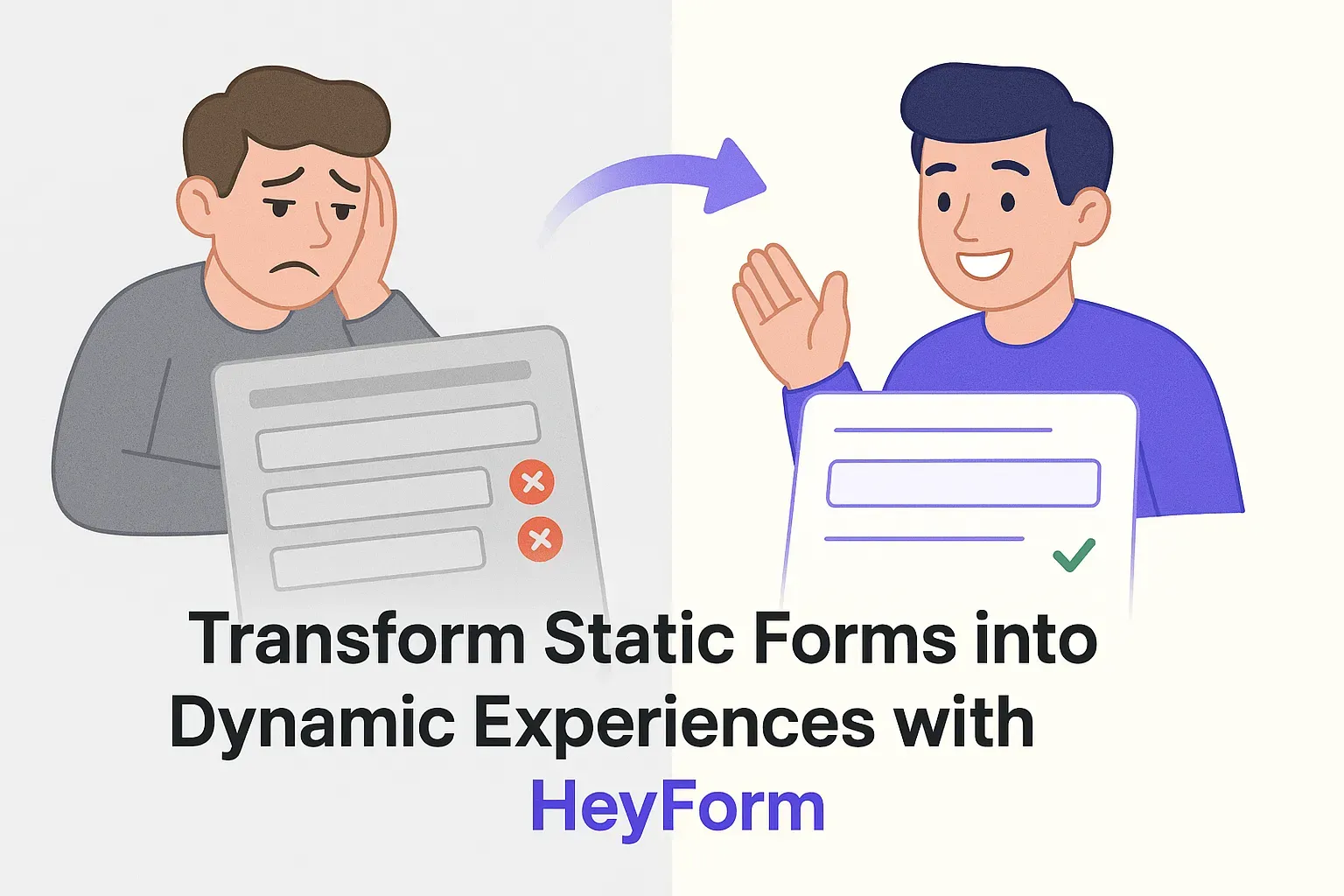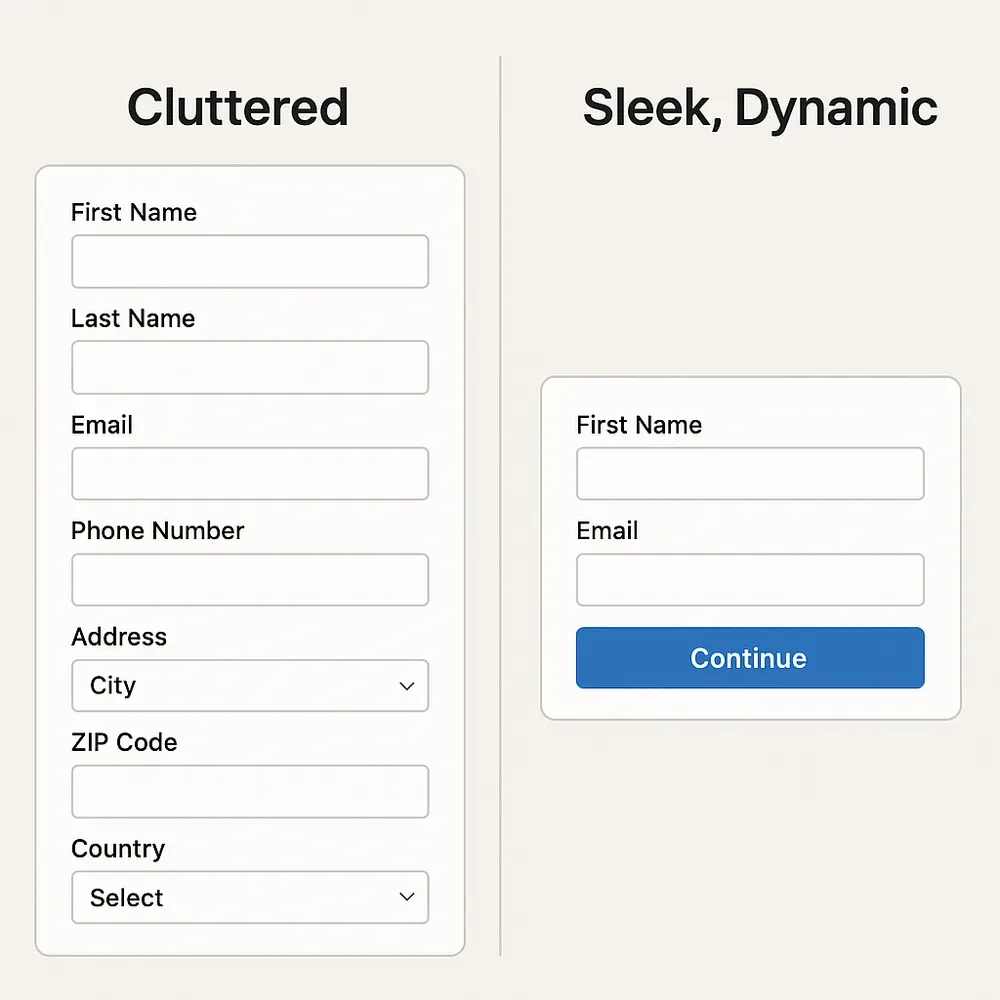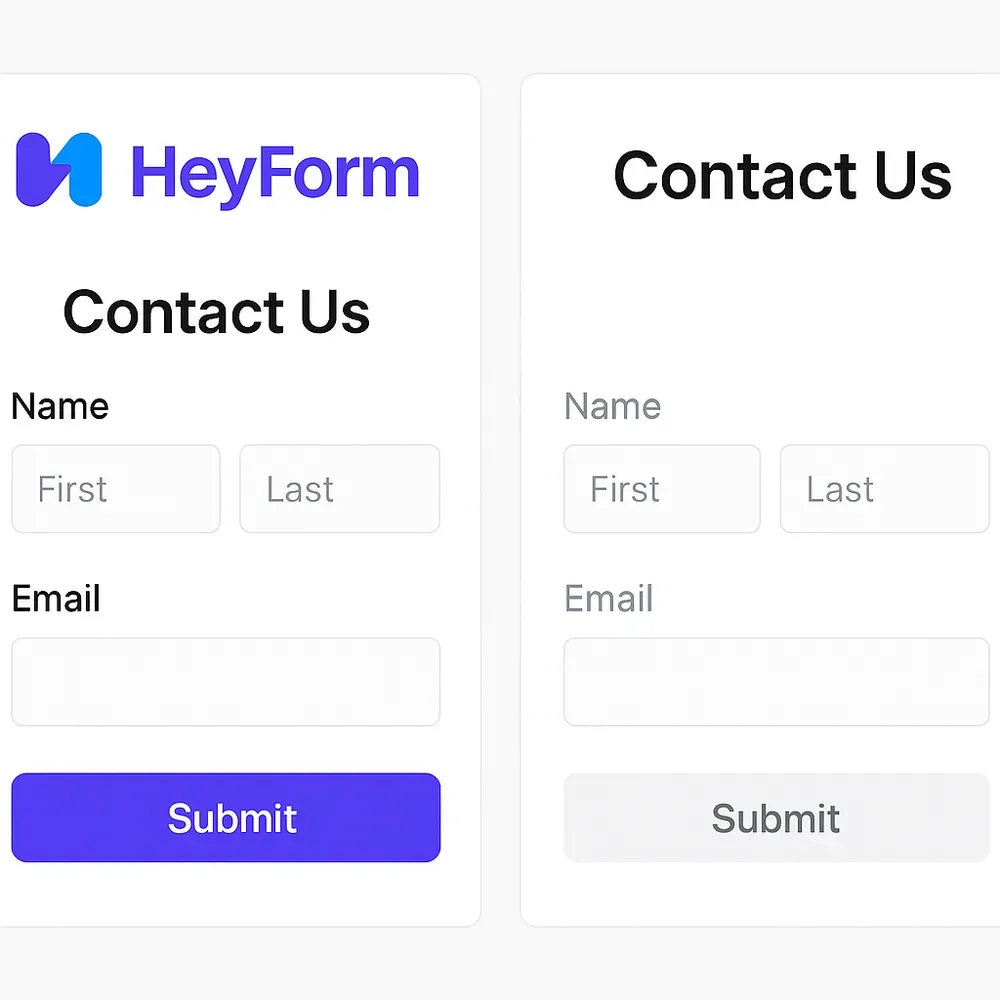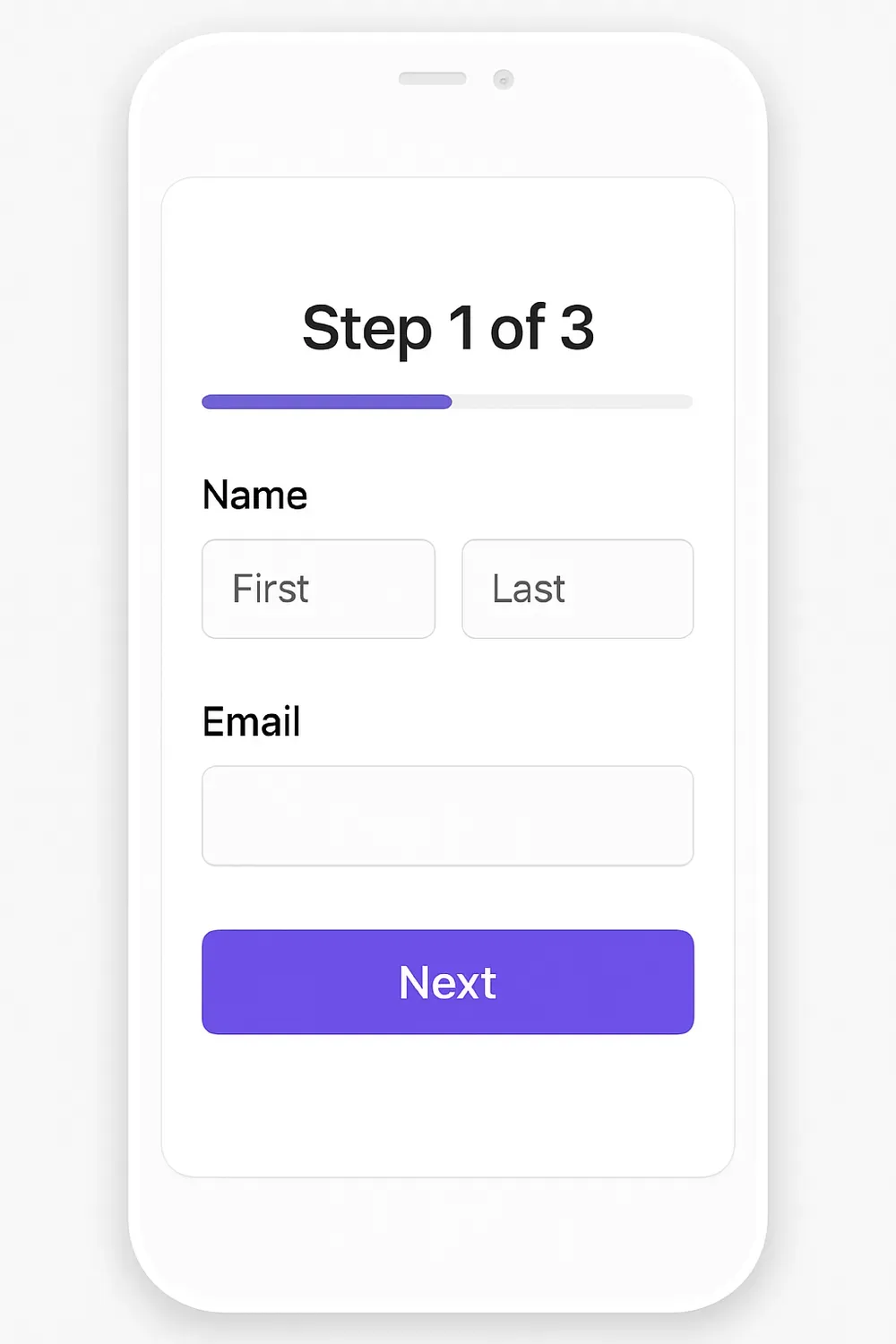A Guide to Customizing Form Workflows with HeyForm's Conditional Logic

In today’s digital landscape, forms are more than just data collection solutions—they’re gateways to meaningful user interactions. However, generic, one-size-fits-all forms often lead to high abandonment rates, frustrated users, and missed opportunities. Enter conditional logic forms and customizable forms, two game-changing features that transform static forms into dynamic, user-friendly experiences.

HeyForm, a leading open-source form builder, empowers businesses to harness these tools, enabling smarter workflows, higher conversion rates, and tailored data collection. This guide dives deep into how HeyForm’s conditional logic and customization features can revolutionize your forms, complete with actionable strategies, real-world examples, and best practices.
Why Traditional Forms Fall Short
Research by Baymard Institute reveals that 21% of users abandon forms due to “Too many questions” or “Poor user experience.” Static forms force irrelevant fields on users, wasting their time and diluting data quality. For instance, asking a Canadian user for a “ZIP code” or bombarding a first-time visitor with complex questions can drive them away.
This is where conditional logic forms shine. By displaying fields based on user responses, they create personalized experiences that reduce friction and boost completion rates. Paired with customizable forms that align with your brand, you can turn forms from a chore into a conversion powerhouse.
What Are Conditional Logic Forms?
Conditional logic (or “branching logic”) allows forms to adapt dynamically based on user input.
For example:
- If a user selects “Yes” to “Are you a homeowner?”, show fields about property type.
- If a user answers “No” to “Need shipping?”, skip the address section.
This ensures users only see questions relevant to them, streamlining the process.
Benefits of Conditional Logic
1. Higher Completion Rates: Shorter, relevant forms reduce fatigue.
2. Cleaner Data: Eliminate irrelevant or inaccurate responses.
3. Improved User Experience: Personalized interactions build trust.
4. Efficient Workflows: Automatically route responses (e.g., send quote requests to sales).
How HeyForm’s Conditional Logic Works
HeyForm simplifies conditional logic setup with an intuitive, no-code interface. Here’s how to leverage it:
1. Define Triggers: Choose a question (e.g., “What’s your role?”).
2. Set Conditions: Specify responses that trigger actions (e.g., “CEO” → show budget field).
3. Customize Actions: Show/hide fields, skip pages, or redirect users.
Example: A nonprofit donation form could ask, “Would you like a receipt?” If “Yes,” display an email field. If “No,” skip ahead.
For advanced users, HeyForm supports multi-level conditions (e.g., “If X and Y, then Z”), making it ideal for complex surveys, event registrations, or lead qualification.
The Power of Customizable Forms

While conditional logic optimizes functionality, customizable forms ensure your forms reflect your brand and goals. HeyForm offers:
- Branding: Add logos, colors, and fonts.
- Layouts: Choose single-step, multi-page, or conversational formats.
- Media Integration: Embed images, videos, or GIFs to guide users.
- Third-Party Widgets: Integrate calendars, maps, or payment gateways.
Pro Tip: Use HeyForm’s theme library to save templates for consistency across campaigns.
Combining Conditional Logic and Customization: Real-World Examples
1. Event Registration
A conference form asks, “Which workshops will you attend?” Based on the selection, HeyForm:
- Shows session-specific waivers.
- Hides conflicting time slots.
- Customize the confirmation email with session details.
Result: Attendees get a tailored agenda, and organizers avoid scheduling errors.
2. Lead Qualification
A SaaS company uses a conditional logic form to ask:
- How many employees do you have?”
- If “1–10,” route to a self-service plan.
- If “50+,” show enterprise contact fields and trigger a sales alert.
Result: Faster lead segmentation and 35% higher sales conversions.
3. Patient Intake Forms
A clinic’s form adapts based on symptoms:
- Selecting “Chest pain” triggers urgency alerts and heart history questions.
- Selecting “Rash” prompts allergy and photo upload fields.
Result: More accurate diagnoses and reduced admin workload.
Best Practices for Designing Conditional Logic Forms

1. Map User Journeys First
Outline potential user paths to avoid overcomplicating logic. Tools like Lucidchart help visualize workflows.
2. Limit Jumps
Avoid excessive branching—use 2–3 conditions per question to prevent confusion.
3. Test Thoroughly
Preview forms as different user types (e.g., new vs. returning customers).
4. Prioritize Mobile
68% of form submissions occur on mobile. Use HeyForm’s responsive preview to optimize layouts.
5. Add Progress Indicators
For multi-page forms, show a progress bar to manage expectations.
Integrate HeyForm with Your Tools
HeyForm’s customizable forms sync seamlessly with:
- CRM Systems: Automate lead entry into HubSpot or Salesforce.
- Email Platforms: Send personalized follow-ups via Mailchimp.
- Analytics: Track drop-off points with Google Analytics.
Explore our guide to “How to Design Effective User Onboarding Survey Questions [+Practical Examples]” for better understanding.
Conclusion:
Conditional logic forms and customizable forms aren’t just features—they’re essential tools for modern businesses. You can turn boring forms into engagement engines by tailoring experiences to user needs and branding interactions to your identity.
Build smarter forms in minutes, with drag-and-drop ease and zero coding. From surveys to sales pipelines, HeyForm gives you the power to ask the right questions, at the right time, in the right way.
